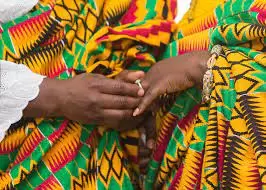More than 79,000 Ghanaian girls 12 -17 years married, living with men
The Ministry identified poverty, illiteracy/low formal education, cultural beliefs, religion, teenage pregnancy and geographical setting as the major causative and contributory factors to the prevalence of child marriage in the country.
- Advertisement -
According to the Ghana Statistical Service 2022 data on child marriage, some 79,733 girls in the country aged between 12 and 17 are married or living with a man.
The data said out of the total number, 25,999 girls between the ages of 12 to 14 fell within the Junior High School age category.
- Advertisement -
It said the regions with the highest percentage of girls were the Northeast Region with thirteen percent, Savannah Region with 10.9 percent and the Northern Region with 10.6 percent.
- Advertisement -
All the regions mentioned in the report had rates more than twice the national average, which was four percent.
According to a 2017 report by the Ministry of Gender, Children and Social Protection (MoGCSP), Child marriage disproportionally affected the girl child more than boys. Only two percent of boys aged twenty to twenty-four years were married before age eighteen as compared to twenty-one percent of girls.
The Ministry identified poverty, illiteracy/low formal education, cultural beliefs, religion, teenage pregnancy and geographical setting as the major causative and contributory factors to the prevalence of child marriage in the country.
- Advertisement -
Girls from the rural areas, according to the MoGCSP factsheet, were more likely to become child brides than their counterparts living in the urban settings.
Also, girls from economically impoverished backgrounds were four times more likely to be married off in their early teens than those from wealthy backgrounds.
The report said uneducated or low educated girls were more likely to be married early than girls who received a senior-high school education or higher.
Experts say teenage pregnancies are viewed as shameful or an embarrassment to the family, hence many girls are forced into early marriage to save what is commonly referred to as the “family honour”.
Source: GNA
- Advertisement -



